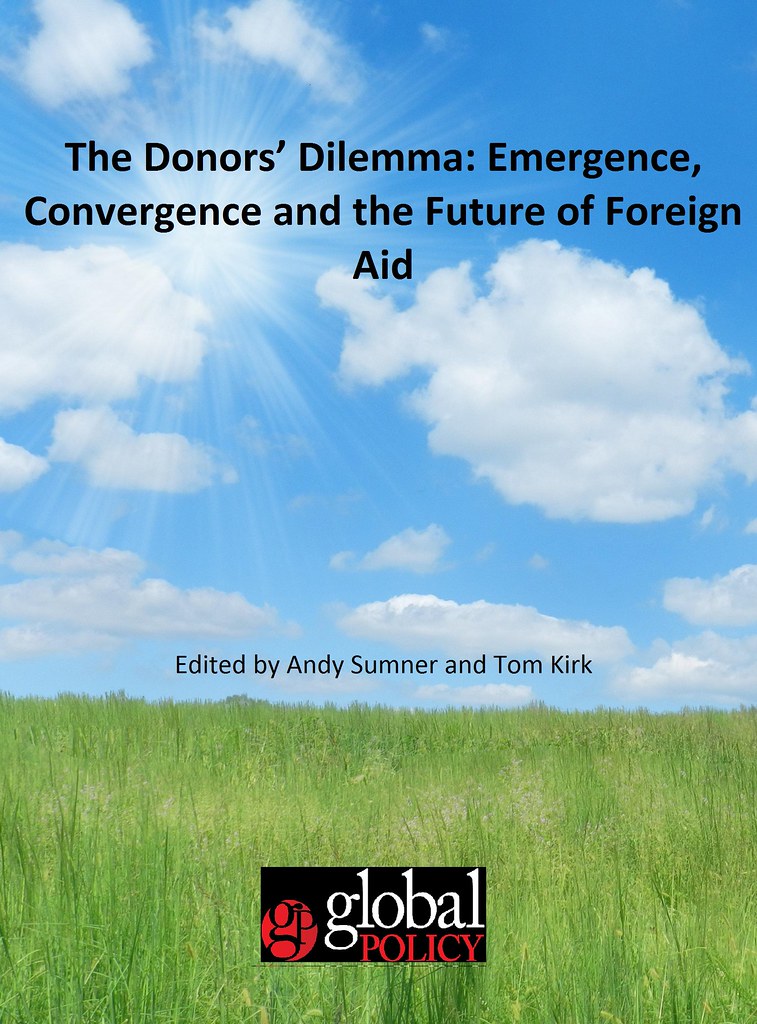Adapting to an Ageing Society: The Stick or the Carrot?
Simon Biggs suggests spaces must be created in which an aging population can continue to contribute to the wider social good.
A demographic change, a task of cultural adaptation
In 2050 the global population aged over 60 will reach two billion, making this age group three times larger than it was in 2000. This is a challenge that is facing both mature and emerging economies making the future shape of a long life key to social development in the 21st century. The World Economic Forum Global Risks group has now identified population aging as one of the five top issues facing the world community in terms of material provision. If the task of addressing global ageing is principally one of cultural adaptation, the forms that adaptation takes require critical consideration.
Everyone wants to live a long life, no-one wants to grow old
In terms of global trends: people are living longer and the numbers of older people relative to younger ones is increasing, away from the ‘traditional’ demographic triangle, with many younger and few older adults to a column whereby different age groups are becoming more or less equal in size. In many advanced economies the transition has largely been achieved, although in emerging ones the speed of this transition is happening at a much faster rate. Older adults are developing lifestyles that reflect a mixture of extended youthful activities and novel mature priorities, but ones that are also more precarious the older one gets. If one were to try to encapsulate this as a cultural trend it may be possible to say that ‘Everyone wants to live a long life, but no-one wants to grow old’.
For societies to successfully respond, to make this transition work, they need to engage in a series of tasks: a re-design of our cities, the extension of a healthy life, intergenerational negotiation of age related roles and a re-evaluation of the contribution of older adults to their societies.
The question is what sort of adaptation should we be aiming for? What, in other words, might the relationship between life-course continuity and discontinuity be and how is it reflected in wider social discourse on the purpose of a long life?
Phase one: more of the same?
The work of the World Bank and the Organisation for Economic Cooperation & Development plus the policy statements of numerous nation states show an emerging international policy consensus. This marks a shift away from holistic approaches around changing lifestyles, to one which focuses on employment as the sole means of filling the years of a long life. This view has become increasingly entrenched following the Global Financial Crisis, though whether there are jobs available and ageism can be reduced in the workplace, is another matter. It assumes that the new direction has been found which lies in extending working life and adopting a restricted understanding of active aging that has been reduced to work, work-like activities and generational competition.
Phase two: Exploring generational complementarity
In contrast a number of writers have emphasised the discontinuous qualities of longevity. This implies that there is a qualitative distinction to be made as the different generations become more equal in demographic size. From this perspective, current policies attempt an erasure of transition, replacing recognition of differing life priorities with ones that deny the special qualities that a long life brings with it. There is emerging evidence that while individuals desire continuity of identity, this does not preclude discontinuity of age-related life-priorities. A key element of this new perspective draws on psycho-social understanding of changing tasks that face adults as they grow older. It raises the issue of the degree to which intergenerational agendas overlap. A solution is suggested that lies less on causing generations to compete on the same territory and more on developing complementary roles and relationships that are based on lifecourse specific priorities.
Evidence is emerging that many of the assumptions of the competitive solution to population ageing may not stand up. For example, generational transfers tend to travel from older to younger family members, while fiscal generational altruism recognises that contributors may not live long enough to receive the full benefit of investments made. Further, it does not appear that younger adults see their elders as a burden. A number of studies now indicate that younger adults do not resent caring for older relatives; rather, they want the right work-life balance that allows it. Neither may younger adults resent paying for other’s pensions and health, they just want the same commitment for themselves when their time comes.
If the first phase of cultural adaptation has been to fill a longer life more of the same and intergenerational competition for work, the second may be to discover the complementary skills that different age groups bring to the table.
Sticks or Carrots in policy
If a policy stick concerns removing benefits (statutory pension eligibility) to force older people to look for work, then a carrot concerns modifying workplaces to make them more age friendly. A number of studies have shown that this can be achieved by: creating greater choice and flexibility about transitions in and out of work and enhancing the capacity of older workers through training, lifelong learning, anti-discrimination policies, making workplaces more attractive to both recruit and retain mature age workers and adapting policies to facilitate new pathways and meanings associated with work and retirement.
The question isn’t really that we don’t know what to do to save money around demographic change but that the solutions are complex, requiring long-term planning. The list would include: a shift to focus on prevention in health care rather than reactive intervention, reducing cumulative disadvantage such that social inequalities are addressed early in the lifecourse, adopting policies that emphasize community, working a few years longer in workplaces designed for age diversity, environments based on universal/age friendly design and age friendly products at affordable prices.
Phase three: rediscovering whole lifecourse priorities
The third phase of adaptation may cause us to reexamine the purpose of a long life, the contribution of older adults and a re-shaping of the lifecourse as a whole. Embrace age-specific contributions, rather than fear personal change. Rediscover generational intelligence, the ability to cooperate across the generational divide. Plus, reshape the whole lifecourse, including longitudinal work-life balance and intergenerational negotiation.
Taken together these steps would facilitate the discovery of each age group’s contribution to social well-being, and the development of complementary rather than competitive relations between those generations, in the workplace, in the family, in policy and in civil society. They provide a meaning in later life that is not solely contingent on economic materialism.
The Journey Ahead
If everybody really does want a long life, it is becoming clearer that few want to grow old as it currently conceived. Policy should be less about work continuation versus re-invented retirement, and more about the emergence of life-course-specific contributions for the wider social good. The role of a progressive social policy would be to make available new social spaces in which these novel forms of age-based complementarity can emerge. It would rest on the negotiation of physical space, of temporal relations such as work-life balance across the lifecourse and the meanings attributed to different life phases. Sustainable solutions, ones that can stand the test of time and respect the life priorities of different generational groups, as each party recognises their own and the other’s specific contribution. True cultural innovation would lie in the facilitation of new roles adapted to a long life, greater attention to generational interconnection, and discovering new ways of releasing age specific potential. The alternative would be a precariat of the long life, with job uncertainty, broken promises on fiscal support and intensified generational rivalry.
Simon Biggs is Professor of Gerontology & Social Policy at the School of Social & Political Sciences, Melbourne University, Australia. Simon has worked as a Community Psychologist and for the UK Social Work Council before joining Keele University, becoming Professor of Social Gerontology in 2000. He was a visiting research fellow at the Department of Social Medicine, Harvard University in 2002, and the UK representative on the EC Masters in Gerontology Programme 2002-2004. From 2004- 2010 he was Professor of Gerontology and Director of the Institute of Gerontology, King’s College London UK. Since Sept 2010, he has worked in Australia as The Brotherhood of St Laurence Professor of Gerontology & Social Policy at the School of Social & Political Sciences, Melbourne University. He has a number of continuing international links including the Universities of Heidelberg, Helsinki, University College Dublin. He has participated in EU, Australian and Canadian Government briefings on population ageing, dignity in later life and on elder protection and since 2008 has been a founding member of the World Economic Forum’s Global Agenda Council on Ageing Societies.
 Global Policy is proud to announce the release of its first e-book - 'The Donors’ Dilemma: Emergence, Convergence and the Future of Foreign Aid' - Guest Edited by Andy Sumner and Tom Kirk
Global Policy is proud to announce the release of its first e-book - 'The Donors’ Dilemma: Emergence, Convergence and the Future of Foreign Aid' - Guest Edited by Andy Sumner and Tom Kirk
As poverty declines, it asks what if the remaining pockets of poverty are increasingly focused in countries where aid is already on the way to becoming irrelevant as domestic resources grow? Download the full e-book here.

